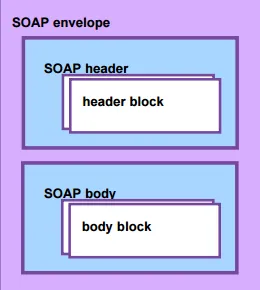
Implementing Microsoft Dynamics 365 for Finance and Operations Apps
Learn best practices, architecture, tools, techniques, and more, 2nd Edition
JJ Yadav, Sandeep Shukla, Rahul Mohta, Yogesh Kasat
- 528 Seiten
- English
- ePUB (handyfreundlich)
- Über iOS und Android verfügbar
Implementing Microsoft Dynamics 365 for Finance and Operations Apps
Learn best practices, architecture, tools, techniques, and more, 2nd Edition
JJ Yadav, Sandeep Shukla, Rahul Mohta, Yogesh Kasat
Über dieses Buch
Harness the power of Finance and Operations apps, and discover all you need for their implementation
Key Features
- Manage and plan different Dynamics configurations, designs, and products
- Learn how to manage projects for pre-sales and implementation using Microsoft Dynamics Lifecycle Services (LCS)
- Discover various integration planning techniques, tools, and frameworks such as PowerApps and Power Automate
Book Description
Microsoft Dynamics 365 for Finance and Operations is a modern cloud ERP platform that adopts a mobile-first approach suitable for medium-to-large enterprises. This book covers the entire implementation process of Dynamics 365 Finance and Operation Apps, including post-implementation and business transformation.
The updated second edition starts with an introduction to Microsoft Dynamics 365, describing different apps and tools under it. You will learn about different implementation methodologies such as Waterfall and Agile, for your projects. We will cover various application components and architectures of Dynamics such as requirements processing, development, reports and analytics, and integration. With the help of tips, techniques, and best practices, you'll explore strategies for managing configurations and data migrations. As you read further, you'll discover development tools and processes in Dynamics for building customized solutions in Dynamics. The book will also demonstrate analytics and financial reporting options such as Power BI and Cortana Intelligence. Finally, you'll learn the importance of testing and explore various automated testing strategies.
By the end of this book, you will have gained the necessary knowledge to implement Microsoft business solutions with Dynamics 365 for Finance and Operations Apps.
What you will learn
- Understand the architecture of Dynamics 365 for Finance and Operations Apps
- Implement Dynamics with confidence to manage finances in your business
- Get up to speed with different methodologies and support cycles of the Microsoft Dynamics architecture
- Explore best practices to analyze the requirements of your business
- Understand the technique of data migration from legacy systems
- Leverage the capabilities of Power BI to make informed business decisions
- Manage all your upgrades through One Version service updates
Who this book is for
This book is for consultants, technical managers, project managers, or solution architects who are looking to implement Microsoft Dynamics 365 Finance and Operations apps in their business. A basic understanding of the enterprise resource planning (ERP) implementation process and software lifecycle is expected.
Häufig gestellte Fragen
Information
Integration Technologies, Planning, and Design
- Basic web integration concepts
- Learning about the integration architecture
- Integration concepts in Finance and Operations
- Integration scenarios and planning
- Integration design and development
- Best practices and recommendations
Basic web integration concepts
RESTful APIs
- Base URL: Such as http://YourWebApplicationAPIURL/
- Media type: Such as application/JSON and application/XML
- Standard HTTP methods: Such as GET, PUT, POST, and DELETE
SOAP APIs

SOAP versus REST
- SOAP is a protocol, while REST is an architectural style.
- SOAP defines standards to be strictly followed, while REST doesn't define too many standards.
- SOAP requires more bandwidth and resources than REST.
- SOAP defines its own security; RESTful web services inherit security measures from the underlying transport layer.
- SOAP permits the XML data format only; REST permits different data formats, such as plain text, HTML, XML, and JSON.
JSON message format
{
"CustomerGroupId":"10",
"Description":"Wholesales customers",
"PaymentTermId":"Net30"
},
{
"CustomerGroupId":"20",
"Description":"Retail customers",
"PaymentTermId":"Receipt"
}
{
"firstName": "John",
"lastName": "Smith",
"isAlive": true,
"age": 25,
"address": {
"streetAddress": "21 2nd Street",
"city": "New York",
"state": "NY",
"postalCode": "10021-3100"
},
"phoneNumbers": [
{
"type": "home",
"number": "212 555-1234"
},
{
"type": "office",
"number": "646 555-4567"
},
{
"type": "mobile",
"number": "123 456-7890"
}
],
"children": [],
"spouse": null
}